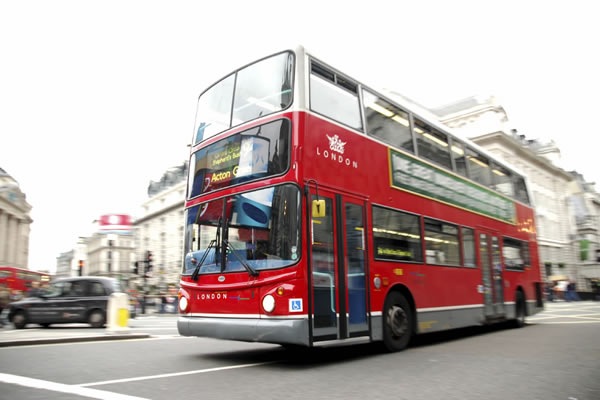Transport Assessment
A Transport Assessment is a comprehensive and systematic process that sets out various transport issues relating to a proposed development. It identifies what measures will be taken to deal with the anticipated transport impacts of the scheme in relation to all forms of travel. National guidance recommends an iterative approach to the assessment where as a first step the improvement of accessibility and encouragement to use sustainable travel should take precedence over measures to increase traffic capacity and increased use of vehicles. Notwithstanding the above, safety and congestion are key issues which must be addressed in the report.
In some cases, the transport issues arising out of development proposals may not require a full Transport Assessment. In these instances a simplified report in the form of a Transport Statement may be more appropriate.
Following the withdrawal, in October 2014, of The Department for Transport Document (March 2007) ‘Guidance on Transport Assessment’ guidance on the preparation of supporting documentation in highway assessment terms can be found in the Planning Practice Guidance (PPG) suite of documents and in particular in “Travel Plans, Transport Assessments and Statements in decision taking”. This guidance is intended to assist all stakeholders in determining whether an assessment may be required and, if so, what level and scope that assessment should include.
For major development the Transport Assessment is normally accompanied by a Travel Plan, which is a report containing a package of measures tailored to the transport needs of the development aimed at increasing travel choices and reducing reliance on the private car.
Travel Plans are typically requested to accompany planning applications when the scale of a development meets with the threshold requiring a Transport Assessment. However Travel Plans can also be requested for extensions to existing developments; where car parking issues are present, where the Local Council perceives the need of such a plan or where the applicant seeks to improve the environmental image of their business.
The requirement for a Transport Assessment/Transport Statement and Travel Plan are site specific but are generally required to be submitted in support of a planning application when developments exceed certain thresholds provided on the Planning Portal.
These thresholds are for guidance purposes and should not be read as absolutes as some parts of the local highway network will be more sensitive to change than others. Early pre-application consultation with the relevant Highway Authorities is strongly recommended to determine the level and scope of the assessment that may be required. Depending on the scale of the development pre-application consultations often involve submitting a Transport Scoping Study to the Local Highway Authority to formally agree the level and scope for the Transport Assessment.
The guidance reflects the Government's policy to reduce the reliance on the private car and to improve accessibility by other sustainable means of transport.
Transport Assessments, and to a lesser extent, Transport Statements are required to identify the impact on the entire transport system in the vicinity of the development. This means that ‘person trips’ by all modes of transport to/from the development are considered and not just vehicle trips on the local road network. This requires a multi-model assessment which can involve using recent census data and also the TRICS database for different modes of travel. Where an extension to an existing use is proposed or housing in a residential area it may be the case that a survey of the present levels of traffic generation or those of an adjacent site with a similar use are required.
Within the Transport Assessment, developer funded mitigation measures are required to be identified to accommodate these ‘person trips’ where detrimental development impact or existing deficiencies in infrastructure have been identified. Such measures are usually secured through “Grampian planning conditions", or binding legal agreements such as a Section 106 Planning Agreement (Town and Country Planning Act) followed by a Section 278 Highways Agreement (Highways Act) to deliver the improvement. These agreements may include a requirement to fund and carry out the improvement work or a financial contribution towards an Authority lead initiative.
Developments are now constantly being encouraged to reduce the amount of vehicle traffic they will generate through the introduction of non car infrastructure improvements and services. As such many Local Planning and Highway Authorities have a Unitary Development Plan or Local Development Framework approval to a district wide contribution by the developer to measures to improve public transport. These contributions are linked to a formula devised by the Local Planning Authority/Local Highways Authority where the level of contribution is linked to the additional vehicle movements generated by the development.
What Our Clients Say:
Swept Path Analysis and Visibility Drawing incorporated into a Technical Note, Proposed Residential Dwelling, Colchester.
Highway Statement, Proposed Residential Development, Stockport
Transport Assessment, Proposed Residential Development (170 dwellings), Essex
Speed Survey, Proposed Private Residential Development – Testimonial
Access Feasibility Study, Proposed Private Residential Development – Testimonial
Analysis of Speed Survey and Swept Path Analysis
Stage 2 Road Safety Audit, Residential, Staffordshire
Construction Traffic Management Plan
Flood Risk Assessment, Testimonial, Industrial Development, Sheffield
Travel Plan
Require Assistance with Detailed Design?
Sanderson Associates have enjoyed over 37 years in business, our experienced Highway Detailed Design Engineers have produced designs for a variety of developments throughout the UK, Isle of Man and Ireland.
We would be pleased to provide you with our competitive fee proposal to provide you with our Detailed Design Services, please call us on 01924 844080 or click here to complete our secure online form.



